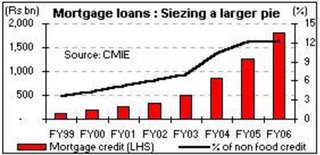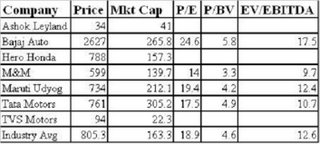Major trends in Global Automobile Industry
1) Mini and compact Segment to drive growth: - The sales in global car market are slowing down as most of the countries have reached the saturation level. Demand in Asian market surging and the mini and compact segment will drive the growth of the market. In India government has abolished the special excise duty of 8 % on small cars will help the manufacturer to price their models lower, leading the growth in the segment. A large part of the demand for the mini segment will come from the two wheeler customer upgrading to passenger cars, mostly in the semi urban and rural areas which will lead the mini compact segment growth in futures. The compact segment is also expected to make a significant contribution to the growth of passenger sales over the next 5 years. This segment is driven by the new entrants and price cuts owing to intense competition.
2) Growth in UV segment to be led by passenger UV: - Overall UV segment will witness the moderate growth but the share of passenger UV will increase tremendously. Higher end sports utility vehicle (SUV’s) will boost the passenger UV growth, albeit on a low base (as compare to other segment), due to the launch of new models and the perceived higher status attached to owning SUVs. However the UV used for commercial purpose will grow only at moderate rate
3) Increased Player thrust to boost the Share of Diesel Car: - The proportion of diesel car in global sales has been increasing as a long term trend. The proportion of fuel used in cars depends upon four key factors. These factors are: -
• Player thrust and model supply.
• Relative availability and overall economics of using each fuel.
• Relative consumer preference
• Environmental regulation.
Diesel penetration in car industry is increasing due to: -
• Continuation of price differential between petrol and diesel
• Increasing proportion of diesel model launch
• Growth revival in entry level car which will be predominantly based on petrol.
Players are also participating in the market dynamics and catering the demand of diesel cars. Europe has witnessed the increase in the proportion of diesel sales in the total car sales, Japanese player have been successful in creating a niche for hybrid cars. On the other hand American players like General Motors are developing fuel cell technology to increase the fuel efficiency of their products.
4) Opportunity for players in Low Cost Country to acquire Overseas Unit: - Low or stagnant automobile production growth in the USA, Western Europe, and Japan has forced the players to look at countries with better growth potential. Manufacturing units in America and Europe have huge capacities in line with their vast domestic automobile output. While this offered them the benefits of scale, the continuous sluggish growth in their local market and their inflationary increase in production cost, especially wage cost. Adoption of cost reduction measure became imperative for players to survive. China, India and Thailand have been regarded as the Low Cost Production bases with their unique offering to the outsourcers. Low cost country will provide them the global clientele and technology and also have synergetic operation. Area of opportunity for India lies in the products which have high level of design and engineering requirements, low level of automation and significant assembly requirement.
5) BRIC countries will be the potential destination for global players: - BRIC countries will be the potential destinations for global players. BRIC countries are expected to account for 47% of passenger car sales during years 2000-2010. (RNCOS’ report, “Passenger Car Market: A Global Review 2006")
6) The other factor determining the course of the auto industry is technology: -Historically the major driving forces behind technological implementation in the auto industry have been based on consumer demands for better vehicle performance and reliability. In recent years, technological improvements have also been aimed at areas such as safety, reduced environmental impact, and additional consumer features unrelated to the operation of the vehicle, such as stereo systems and navigational aides. New technologies are also determining the way the auto industry does business. In 1999, despite the fact that only 5 percent of the car sales were done through the Internet, as much as 40 percent of the buyers of a new vehicle in the US used it at least once to obtain information about the car they are buying (J.D. Power and Associates 2000). Sales through the web are expected have an explosive growth in the years to come. Changes are also happening at the level of the supply chain. With the recent announcement of Ford, General Motors, Daimler Chrysler, Renault, and Nissan to join their e-commerce initiatives, the auto industry is entering a new era of supply chain management.
7) Rising competition will offset scale and productivity benefits: - As globalization is the key trend in Industry, Competition is expected to intensify up by 2009-10 as more players enter the mainstream car segment (Compact or midsize) the outlook on profitability of the industry will change drastically. Process improvements and rising scale of operations have boosted the industry operating margin during the past 5 years significantly in the below mentioned areas; -
• Reduction in raw material cost due to measures like vendor rationalization and process improvement with the OEM and vendors.
• Reduction in labour cost
• Reduction in overhead
The industry capacity utilization growth rate will surge on the back of strong growth in volumes but these competition will negatively affect the margin in areas such as; -
• Fall in prices and hence in realization per car
• Increase in raw material cost, as some manufacturer will offer better preposition by providing more features at the same price.
8) Consolidation: - The global car industry will continue to consolidate over the next five years as manufacturers battle against the rise of Asian producers, overcapacity and the high cost of raw materials, automotive executives believe. The high number of Asian car bosses expecting further consolidation was driven partly by high expectations of consolidation in the Chinese industry. China has many relatively small car companies with only a few large firms, such as China Brilliance and Shanghai Automotive Industry Corporation. The bigger companies have generally expanded in partnership with Western companies, rather than on their own.
9) Environmentally Friendly Products: - As the auto industry faces recent slipping sales, clean energy vehicles are catching the attention of consumers looking for efficiency and environmentally friendly alternatives, giving manufacturers a new direction for growth. The momentum behind green cars is a reaction to a variety of factors such as fuel prices despite current declines, environmental issues such as greenhouse gas emissions and global national energy security concerns. While many companies pursue the plug-in hybrid models, full electric vehicles are rapidly grabbing industry attention. While there are very few publicly owned companies currently offering mass-produced electric cars? Nissan has plans for a 125-mile range all-electric car, but plans for production are targeted for 2010

